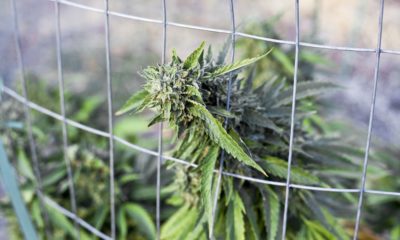
Culture
Despite Legalization, Teen Pot Use Down
Pro-cannabis advocates weigh in on how the results of this annual federal survey silence prohibitionists and dispel myths.
According to new federal data, teen marijuana use has dropped to its lowest levels in nearly 15 years.
The data was released as part of the annual National Survey on Drug Use and Health, conducted by the Substance Abuse and Mental Health Services Administration (SAMHSA). This year’s edition reports that teen marijuana use decreased nationally from 2015 to 2016 by 0.5 percent, as the past-month use rate for the 12-17 age group now stands at 6.5 percent across the U.S.
For years, opponents of legal marijuana have pushed an ideology that their actions are in fact meant to “save the children” from a life of substance abuse. Now, three years into the great legalization experiment, no trends exist to give that particular anti-pot narrative legs. We asked the man who led Colorado’s legalization effort, Mason Tvert, what it’s like to continue to see some of the most tired arguments against pot continue to die.
“This is just the latest evidence that governments do not need to criminalize responsible adult cannabis use in order to prevent abuse and teen use,” said Tvert.
“Our country has been developing a more reasonable and responsible approach to marijuana, regulating it for medical and adult use, and people appear to be respecting that,” he continued.
Tvert also said the survey results “demolish the myth” that rolling back marijuana prohibition laws will inevitably result in more use among teens saying, “These survey results indicate the states are heading in the right direction on marijuana policy. It would be a shame for the federal government to step in now and halt what appears to be promising and thus far successful experimentation with regulating marijuana.”
Other legalization supporters also came out strong to reinforce the hard facts presented by the report.
“Critics of legalization worry about the message being sent to youth by marijuana policy reform efforts, but the real message is that marijuana should only be used by responsible adults, and it seems to be sinking in. Regulating marijuana for adults reinforces that message and creates effective mechanisms for making it more difficult for teens to obtain marijuana,” said Morgan Fox, senior communications manager for the Marijuana Policy Project, in a statement. “Marijuana is objectively less harmful than alcohol, and regulation gives adults the legal option to choose the safer substance.”
Also in the statement, MPP noted other recent research on the subject of teen use, including data released this past February by the Colorado Department of Public Health and Environment showing marijuana use rates among adolescents “has not changed since legalization either in terms of the number of people using or the frequency of use among users.” And also, a report released last week by the Washington State Institute for Public Policy also found that teen marijuana use has not increased in that state. Colorado and Washington were the first states to make marijuana legal and regulated for adults.
During a speech, the same day the results were released, President Trump’s Office of National Drug Control Policy Acting Director Richard Blum stated that adult use has jumped considerably.
.@ONDCP Acting Dir Baum: 20.8% of 18-25 year olds reported past month #marijuana use. Highest rate ever over past 15 years. #recoverymonth
— SAMHSA (@samhsagov) September 7, 2017
Blum may be attempting to show some type of negative effects for users in that age bracket, but according to supporters the increase in cannabis consumption by 18 to 25 year olds could very well just be people moving away from alcohol to a now legal substance. “It appears adults are increasingly using cannabis as a substitute for alcohol, which is a promising trend since it poses far less potential harm to consumers and society,” said Tvert — whose theory is also backed up by another part of the SAMHSA data showing alcohol use rates among all age groups decreased.
Dr. Amanda Reiman, who helped lead the Proposition 64 effort to legalize cannabis in California and currently serves on the International Cannabis Growers Association board, also weighed in on the new data coming out of D.C.
“Drug policy reformers have always spoken truth to the fact that prohibition does nothing to control drugs. The assumption that legalization would lead to increased use by teens was invented and spread by prohibitionists,” said Reiman, “However, everyone knows that those who sell drugs in the illicit market do not ask for ID, and that, even when illegal, teens have no problem accessing cannabis. These data show that when you move a substance from the streets into a regulated market, it is easier to control and to ensure that it does not get into the hands of the wrong person.”
According to Reiman, when the issue of teen use comes up, she tells this story: Shortly after Colorado legalized cannabis for adult use, the state sent 50 underage decoys to dispensaries to try and purchase cannabis. Only one was successful.
“Now, imagine giving 50 teenagers each $50 and sending them into Central Park and asking them to come back with cannabis. Not only would all of them be successful, but most of them would be offered things besides cannabis. That’s why regulation works,” she said.
TELL US, do you think legalization encourages teens to smoke marijuana?

























